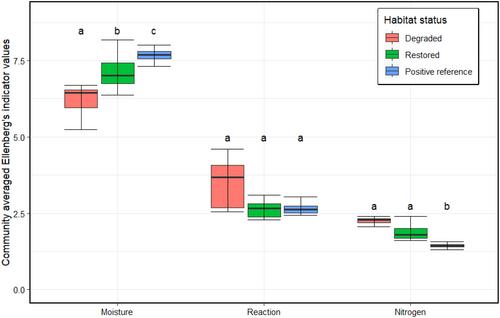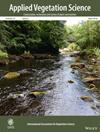Estimating reference conditions using baseline vegetation data to inform large-scale ecosystem restoration efforts
Abstract
Aims
Ecological restoration is informed by established guidelines, including the use of reference ecosystems to direct restoration objectives and quantify progress. Despite their importance, the use of reference conditions in restoration projects has been inconsistent, particularly where habitat degradation has occurred at landscape scales. Here we use baseline vegetation data and the relationship between vegetation communities and environmental conditions to identify and select positive reference sites within a proposed landscape-scale restoration project. In addition, we demonstrate the use of positive references in monitoring through an adjacent post-restoration case study area.
Location
Wild Nephin National Park, Mayo, Ireland.
Methods
Vegetation communities at sites (n = 230) within a large (4700 ha) proposed restoration area were surveyed using quadrats. Positive reference sites were identified following community classification within the Irish Vegetation Classification (IVC). The environmental determinants of positive references were assessed through redundancy analysis. Based on these determinants, sites with similar environmental conditions were identified though k-medoids clustering, enabling positive references to be spatially designated. Ordination and Ellenberg's indicator values were used to demonstrate the use of positive references in restoration monitoring.
Results
A total of 49 positive reference sites were identified for the study area. Altitude, soil type, subsoil type, soil depth and topographical position were identified as significant determinants of communities within positive reference sites. K-medoids clustering with 11 clusters accurately grouped environmentally similar regions of the study area and enabled positive reference sites to be determined and designated spatially based on the cluster groupings.
Conclusions
Overall, the study demonstrates with a practical example how landscape-scale restoration can be informed and monitored through the identification of appropriate positive reference sites within the restoration area, based on the relationship between existing non-degraded plant communities and their environmental determinants, derived from baseline habitat data.


 求助内容:
求助内容: 应助结果提醒方式:
应助结果提醒方式:


